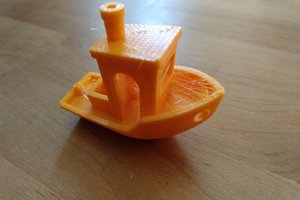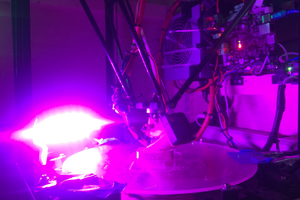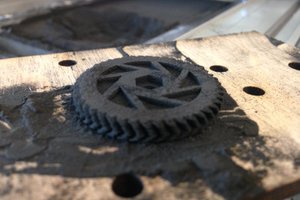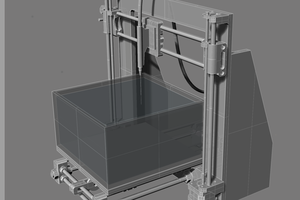Shortly after getting a 3D printer, I had to remove the Micro SIM from the 2013 Nexus 7 I keep on my dashboard. When the holder fell to tens of pieces in my hands, I realized I could probably concoct a workable stand-in that I could print. I didn't even know such small plastic parts could break into so many pieces.
Replicating the SIM card geometry was easy enough with a pair of calipers and some guesses at corner radius. Building the carrier around that was slightly more difficult, but I measured the remaining fragments of the original to get overall thickness and width of the internal slot, and with one or two print-and-test cycles, I got close enough for reliable function.
Notes:
- This part isn't form-fitting, at all. It DOES fit entirely within the outer extent of the original case, so you won't have any problem with add-on cases.
- This part completely ignores the original ejection mechanism. I think it actually shoves it out of the way, but it doesn't seem to cause any issues, and if it damages that ejection lever internally, who cares? Do you plan to go buy the original part again for $30-$150, anyway?
- There is a little slot cut on the back side so you can grip it with a fingernail for removal.
Notes for printing:
- This part is designed for .1mm layers, and the first layer should also be .1mm
- Since the recessed finger slot is a bridge, and since it's only 1-2 layers deep, you'll want to print at a relatively low temperature so that filament doesn't just ooze into the gap. If you're high in your filament's range, it kind of just fills in completely, and makes removing the tray a pain.
- If your tablet lives in a car like mine, or ever gets left in a car, like most, you'll want to print out of something other than PLA. Probably PETG is best (that's survived in my car for months). That said, I was using a PLA version for a long time, and while the heat of the car in sun did melt the tray into a more form-fitting shape, it never caused intermittent or degraded operation. So if you've only got PLA, probably no need to dive into printing with a new filament.
 alexwhittemore
alexwhittemore

 Peter McCloud
Peter McCloud
 DocDawning
DocDawning
 bfoz
bfoz
 Michael
Michael
I needed something like this recently when going back to an older phone that used a mini-SIM and all I had was a micro-SIM. Not having a 3D printer, I printed out the outline on paper as a pattern to cut it from a piece of discount membership card (fake credit card) plastic that was just about the right thickness and taped my sim to it. Worked for the 2 days I needed it until the new phone arrived.
Nice repair! It looks good, has the nub to pull it out again, and doesn't get fussy with perfect replication of the original.